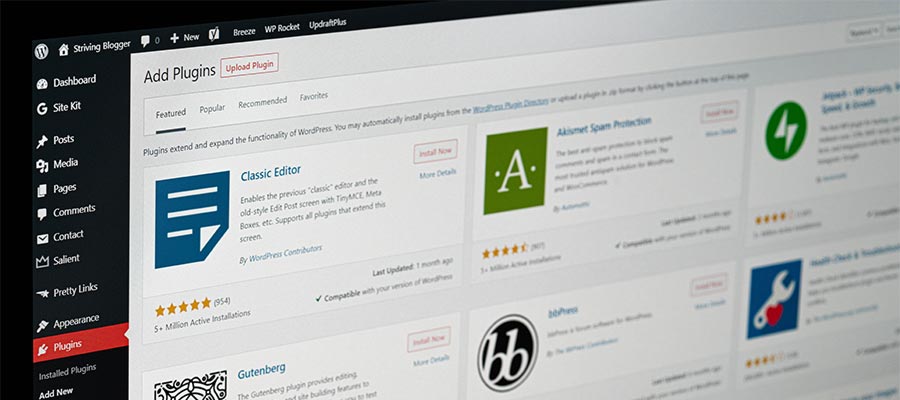Building Websites with the Future in Mind
Web design is full of existential questions. One of the biggest: Can I build a website today that will still be relevant tomorrow?
The answer depends on how far into the future you look. But the more time that passes, the less relevant a website’s design and functionality become. The future always brings change. And often in ways we don’t anticipate.
This is probably a good thing. It keeps web designers busy. That could mean redesigning a client’s website. But it might also lead to refactoring an existing site.
That’s why it’s important to build websites with the future in mind. Below are a few tips for doing just that.
Use Established Tools and Processes
Content Management Systems (CMS) have come to dominate the landscape. There are big players such as WordPress and Drupal. But there are also several smaller competitors.
Many of the up-and-coming systems sound compelling. But it’s fair to wonder about their potential longevity. Simply put: They may or may not be around in a few years.
This isn’t a question of their quality. The reality is that it’s an uphill battle. There are bound to be casualties along the way.
This may not be a deal-breaker for small projects. But stability is key for larger websites. Moving to a new CMS because your current platform is languishing (or worse) is a major task.
That’s why choosing a CMS is the biggest decision you’ll make. Choose wisely.
From there, think about any plugins you intend to use. This is especially important for plugins that power core functionality. For example, eCommerce, member management, etc. Mission-critical plugins should be supported well into the future.
All told, the goal is to avoid a major disruption. Choosing the right tools will help.

Design and Code With Flexibility in Mind
Flexibility is important for the future of your website. Design elements and functionality need to be resilient. This will better allow it to adapt to future needs.
How does that look in practice?
Design
Websites evolve. New content is added, and formatting is subject to change. We can’t always predict the details, however. Thus, we often design for the here and now.
This doesn’t mean we can’t prepare. One way to do this is by utilizing the newer layout features in CSS. Flexbox, for example, offers multicolumn layouts that automatically adjust to your content. And CSS Grid can power complex layouts with relative ease.
Navigation is another area that always seems to change. We can prepare by following the trends. That could mean placing at least some items behind a hamburger menu. Or by organizing items into a “mega menu” structure. This allows for growth and doesn’t require radical design changes.
Above all, look for solutions that are both creative and practical. This will help you avoid future dilemmas.
Code
Just as content needs to change, so do functionality requirements. Therefore, it makes sense to both anticipate and accept this fact.
Writing code that allows for future tweaks can be challenging. Sometimes just getting our code to work takes all our energy. Planning for the future? That could be an afterthought.
Plus, there are many ways to accomplish the same result. But this is a positive. Once you have achieved your initial goals, you can revisit your code.
From there, think about ways to streamline your work. Look at how easy it will be to extend the functionality later. Go back and make your code as efficient as possible. Taking these steps could prevent a future mess.

Look for Areas of Potential Growth
Building websites for clients is a guessing game. It involves interpreting vague requests and anticipating how they’ll react to your ideas. It can be difficult to get on the same page, so to speak.
That’s why it’s important to ask the right questions. This can be helpful for spotting areas of a project that might expand over time.
For instance, let’s say that a client is looking for a simple eCommerce site (which doesn’t exist, by the way). This is an area primed for growth.
New products and features will likely be added at some point. Thus, you can design and build their site accordingly.
One example is implementing a shopping cart that is extensible. That flexibility will come in handy someday.

You Can’t Stop the Future, but You Can Try to Build for It
Predicting the future of web design and our client’s needs isn’t an exact science. Yet it’s still a worthy endeavor. There will be instances when we guess wrong. But implementing forward-thinking practices will help us better adapt to change.
It’s about making smart decisions every step of the way. Whether it’s choosing a CMS or writing some CSS, it’s important to think about how these decisions impact the future.
Nothing we create is going to last forever. But with preparation, we can help to ensure that its evolution is as smooth as possible.